Occupation Poet Name Comte Lautreamont | Role Poet Movies Watson and the Shark | |
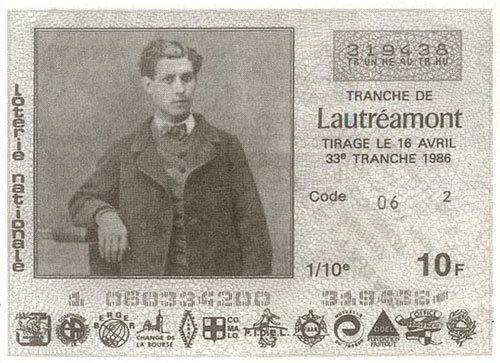 | ||
Parents Francois Ducasse, Jacquette-Celestine Davezac Books Les Chants de Maldoror, Maldoror & the complete, Maldoror and Poems, Oeuvres completes, Poesies and complete Similar People Andre Breton, Arthur Rimbaud, Jules Laforgue, Stephane Mallarme, Tristan Tzara Died 24 November 1870 (aged 24) Paris, France | ||
Comte de lautr amont bot poetry
Comte de Lautréamont ([lotʁeamɔ̃]) was the pseudonym of Isidore-Lucien Ducasse (4 April 1846 – 24 November 1870), a French poet born in Uruguay. His only works, Les Chants de Maldoror and Poésies, had a major influence on modern literature, particularly on the Surrealists and the Situationists. He died at the age of 24.
Contents
- Comte de lautr amont bot poetry
- Une Vie une uvre Isidore Ducasse comte de Lautramont 1846 1870
- Youth
- Years in Paris
- Death
- Les Chants de Maldoror
- Surrealism
- Influence on others
- Quotes
- References
Une Vie, une œuvre : Isidore Ducasse, comte de Lautréamont (1846-1870)
Youth

Ducasse was born in Montevideo, Uruguay, to François Ducasse, a French consular officer, and his wife Jacquette-Célestine Davezac. Very little is known about Isidore's childhood, except that he was baptized on 16 November 1847 in the cathedral of Montevideo and that his mother died soon afterwards, probably due to an epidemic. In 1851, as a five-year-old, he experienced the end of the eight-year Siege of Montevideo in the Argentine-Uruguayan War. He was brought up to speak three languages: French, Spanish and English.
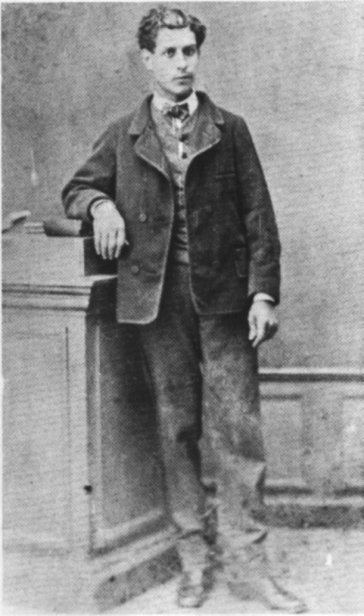
In October 1859, at the age of thirteen, he was sent to high school in France by his father. He was trained in French education and technology at the Imperial Lycée in Tarbes. In 1863 he enrolled in the Lycée Louis Barthou in Pau, where he attended classes in rhetoric and philosophy (under and uppergreat). He excelled at arithmetic and drawing and showed extravagance in his thinking and style. Isidore was a reader of Edgar Allan Poe and particularly favored Percy Bysshe Shelley and Byron, as well as Adam Mickiewicz, Milton, Robert Southey, Alfred de Musset and Baudelaire. During school he was fascinated by Racine and Corneille, and by the scene of the blinding in Sophocles' Oedipus the King. According to his schoolmate Paul Lespès, he displayed obvious folly "by self-indulgent use of adjectives and an accumulation of terrible death images" in an essay. After graduation he lived in Tarbes, where he started a friendship with Georges Dazet, the son of his guardian, and decided to become a writer.
Years in Paris
After a brief stay with his father in Montevideo, Ducasse settled in Paris at the end of 1867. He began studies at the École Polytechnique, only to abandon them one year later. Continuous allowances from his father made it possible for Ducasse to dedicate himself completely to his writing. He lived in the "Intellectual Quarter", in a hotel in the Rue Notre-Dame-des-Victoires, where he worked intensely on the first canto of Les Chants de Maldoror. It is possible that he started this work before his passage to Montevideo, and also continued the work during his ocean journey.
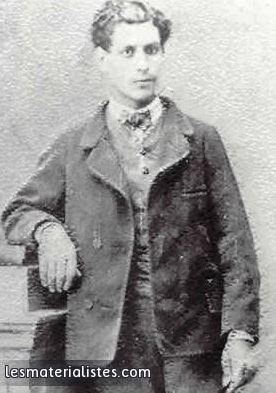
Ducasse was a frequent visitor to nearby libraries, where he read Romantic literature, as well as scientific works and encyclopaedias. The publisher Léon Genonceaux described him as a "large, dark, young man, beardless, mercurial, neat and industrious", and reported that Ducasse wrote "only at night, sitting at his piano, declaiming wildly while striking the keys, and hammering out ever new verses to the sounds".
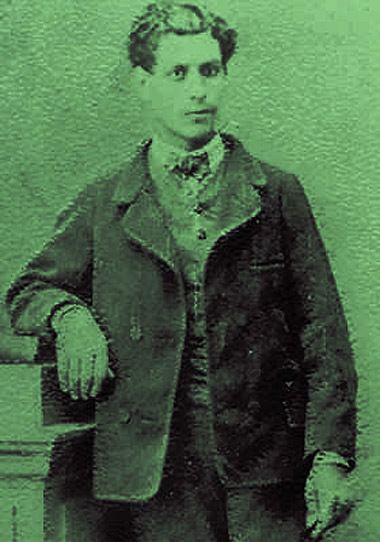
In late 1868, Ducasse published (anonymously and at his own expense) the first canto of Les Chants de Maldoror (Chant premier, par ***), a booklet of thirty-two pages which is considered by many to be a bold, taboo-defying poem concerning pain and cruelty.
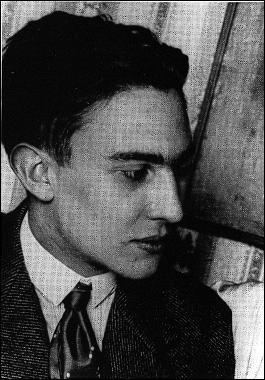
On 10 November 1868, Ducasse sent a letter to the writer Victor Hugo, in which he included two copies of the first canto, and asked for a recommendation for further publication. A new edition of the first canto appeared at the end of January 1869, in the anthology Parfums de l'Âme in Bordeaux. Here Ducasse used his pseudonym Comte de Lautréamont for the first time. His chosen name was based on the character of Latréaumont from a popular 1837 French gothic novel by Eugène Sue, which featured a haughty and blasphemous anti-hero similar in some ways to Isidore's Maldoror. The title was most probably paraphrasing l'autre à Mont(evideo), although it can also be interpreted as l'autre Amon (the other Amon) or "l'autre Amont" (the other side of the river).('En amont'= French for: 'Upstream')
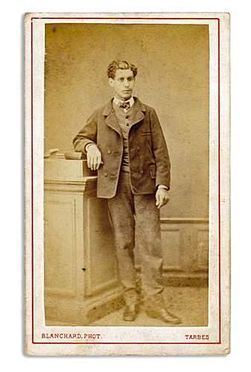
A total of six cantos were to be published during late 1869, by Albert Lacroix in Brussels, who had also published Eugène Sue. The book was already printed when Lacroix refused to distribute it to the booksellers as he feared prosecution for blasphemy or obscenity. Ducasse considered that this was because "life in it is painted in too harsh colors" (letter to the banker Darasse from 12 March 1870).
Ducasse urgently asked Auguste Poulet-Malassis, who had published Baudelaire's Les Fleurs du mal (The Flowers of Evil) in 1857, to send copies of his book to the critics. They alone could judge "the commence of a publication which will see its end only later, and after I will have seen mine". He tried to explain his position, and even offered to change some "too strong" points for coming editions:
I have written of evil as Mickiewicz, Byron, Milton, Southey, A. de Musset, Baudelaire and others have all done. Naturally I drew register a little exaggerated, in order to create something new in the sense of a sublime literature that sings of despair only in order to oppress the reader, and make him desire the good as the remedy. Thus it is always, after all, the good which is the subject, only the method is more philosophical and less naive than that of the old school. (...) Is that the evil? No, certainly not.
Poulet-Malassis announced the forthcoming publication of the book the same month in his literary magazine Quarterly Review of Publications Banned in France and Printed Abroad. Otherwise, few people took heed of the book. Only the Bulletin du Bibliophile et du Bibliothécaire noticed it in May 1870, saying: "The book will probably find a place under the bibliographic curiosities".
Death
During spring 1869, Ducasse frequently changed his address, from Rue du Faubourg Montmartre 32 to Rue Vivienne 15, then back to Rue Faubourg Montmartre, where he lodged in a hotel at number 7. While still awaiting the distribution of his book, Ducasse worked on a new text, a follow-up to his "phenomenological description of evil", in which he wanted to sing of good. The two works would form a whole, a dichotomy of good and evil. The work, however, remained a fragment.
In April and June 1870, Ducasse published the first two installments of what was obviously meant to be the preface to the planned "chants of the good" in two small brochures, Poésies I and II; this time he published under his real name, discarding his pseudonym. He differentiated the two parts of his work with the terms philosophy and poetry, announced that the beginning of a struggle against evil was the reversal of his other work:
I replace melancholy by courage, doubt by certainty, despair by hope, malice by good, complaints by duty, scepticism by faith, sophisms by cool equanimity and pride by modesty.
At the same time Ducasse took texts by famous authors and cleverly inverted, corrected and openly plagiarized for Poésies:
Plagiarism is necessary. It is implied in the idea of progress. It clasps the author's sentence tight, uses his expressions, eliminates a false idea, replaces it with the right idea.
Among the works plagiarized were Blaise Pascal's Pensées and La Rochefoucauld's Maximes, as well as the work of Jean de La Bruyère, Luc de Clapiers, Dante, Kant and La Fontaine. It even included an improvement of his own Les Chants de Maldoror. The brochures of aphoristic prose did not have a price; each customer could decide which sum they wanted to pay for it.
On 19 July 1870, Napoleon III declared war on Prussia, and after his capture, Paris was besieged on 17 September, a situation with which Ducasse was already familiar from his early childhood in Montevideo. The living conditions worsened rapidly during the siege, and according to the owner of the hotel he lodged at, Ducasse became sick with a "bad fever".
Lautréamont died at the age of 24, on 24 November 1870, at 8 am in his hotel. On his death certificate, "no further information" was given. Since many were afraid of epidemics while Paris was besieged, Ducasse was buried the next day after a service in Notre Dame de Lorette in a provisional grave at the Cimetière du Nord. In January 1871, his body was put into another grave elsewhere.
In his Poésies Lautréamont announced: "I will leave no memoirs", and as such, the life of the creator of the Les Chants de Maldoror remains for the most part unknown.
Les Chants de Maldoror
Les Chants de Maldoror is based on a character called Maldoror, a figure of unrelenting evil who has forsaken God and mankind. The book combines a violent narrative with vivid and often surrealistic imagery.
The critic Alex De Jonge writes: "Lautréamont forces his readers to stop taking their world for granted. He shatters the complacent acceptance of the reality proposed by their cultural traditions and makes them see that reality for what it is: an unreal nightmare all the more hair-raising because the sleeper believes he is awake".
There is a wealth of Lautréamont criticism, interpretation and analysis in French (including an esteemed biography by Jean-Jacques Lefrère), but little in English.
Lautréamont's writing has many bizarre scenes, vivid imagery and drastic shifts in tone and style. There is much "black humor"; De Jonge argues that Maldoror reads like "a sustained sick joke".
Surrealism
In 1917, French writer Philippe Soupault discovered a copy of Les Chants de Maldoror in the mathematics section of a small Parisian bookshop, near the military hospital to which he had been admitted. In his memoirs Soupault wrote:
By the light of a candle that was permitted to me, I began reading. It was like an enlightenment. In the morning I read the Chants again, convinced that I had dreamed... The day after, André Breton came to visit me. I gave him the book and asked him to read it. The following day he brought it back, enthusiastic as I had been.
Due to this find, Lautréamont was introduced to the Surrealists. Soon they called him their prophet. As one of the poètes maudits (accursed poets), he was elevated to the Surrealist Panthéon beside Charles Baudelaire and Arthur Rimbaud, and acknowledged as a direct precursor to Surrealism. André Gide regarded him — even more than Rimbaud — as the most significant figure, as the "gate-master of tomorrow's literature", meriting Breton and Soupault "to have recognized and announced the literary and ultra-literary importance of the amazing Lautréamont".
Louis Aragon and Breton discovered the only copies of the Poésies in the National Library of France, and published the text in April and May 1919 in two sequential editions of their magazine Literature. In 1925, a special edition of the Surrealist magazine Le Disque Vert was dedicated to Lautréamont, under the title "Le cas Lautréamont" (The Lautréamont case). It was the 1927 publication by Soupault and Breton that assured him a permanent place in French literature and the status of patron saint in the Surrealist movement. In 1930, Aragon called Lautréamont the "veritable initiator of the modern marvelous", with "the marvelous" being a primary feature of Breton's Surrealism. In 1940, Breton incorporated him into his Anthology of Black Humour.
The title of an object by American artist Man Ray, called L'énigme d'Isidore Ducasse (The Enigma of Isidore Ducasse), created in 1920, contains a reference to a famous line in the 6th canto. Lautréamont describes a young boy as "beautiful as the chance meeting on a dissecting-table of a sewing-machine and an umbrella". Similarly, Breton often used this line as an example of Surrealist dislocation.
Maldoror inspired many artists: Fray De Geetere, Salvador Dalí, Man Ray, Jacques Houplain, Jindřich Štyrský, René Magritte, Georg Baselitz and Victor Man. Individual works have been produced by Max Ernst, Victor Brauner, Óscar Domínguez, André Masson, Joan Miró, Aimé Césaire, Roberto Matta, Wolfgang Paalen, Kurt Seligmann and Yves Tanguy. The artist Amedeo Modigliani always carried a copy of the book with him and used to walk around Montparnasse quoting from it.
In direct reference to Lautréamont's "chance meeting on a dissection table", Ernst defined the structure of the surrealist painting: "A linking of two realities that by all appearances have nothing to link them, in a setting that by all appearances does not fit them."
The debut record by the experimental/industrial music group Nurse With Wound is titled "Chance meeting on a dissecting table of a sewing machine and an umbrella".
Félix Vallotton and Dalí made "imaginary" portraits of Lautréamont, since no photograph was available.
Influence on others
Kadour Naimi realized an adaptation of Les Chants de Maldoror, in theater in 1984, and as a film in 1997.
A portion of Maldoror is recited toward the end of Jean-Luc Godard's 1967 film Week End.
Situationist founder, filmmaker and author Guy Debord developed a section from Poésies II as thesis 207 in The Society of the Spectacle. The thesis covers plagiarism as a necessity and how it is implied by progress. It explains that plagiarism embraces an author's phrase, makes use of his expressions, erases a false idea, and replaces it with the right idea. His fellow Situationist Raoul Vaneigem placed considerable importance on the insights of Lautréamont, stating in the Introduction to The Revolution of Everyday Life that: “For as long as there have been men — and men who read Lautréamont — everything has been said and few people have gained anything from it.”
The writers Jean Paulhan and Henri Michaux have both counted Lautréamont as an influence on their work.
Kenneth Anger claimed to have tried to make a film based on Maldoror, under the same title, but could not raise enough money to complete it.
In recent years, invoking an obscure clause in the French civil code, Article 171, modern performance artist Shishaldin petitioned the government for permission to marry the author posthumously.
John Ashbery, an American poet influenced by surrealism, entitled his 1992 collection Hotel Lautréamont, and the English edition notes that Lautréamont is "one of the forgotten presences alive" in the book.
Brazilian author Joca Reiners Terron depicts the character of Isidoro Ducasse as one of the seven angels of the Apocalypse in his first novel, Não Há Nada Lá. Ducasse's character becomes obsessed with an edition of Les Fleurs du Mal in the novel, while taking a trip by train through Europe.
Lautréamont and his Chants de Maldoror are briefly mentioned in Jô Soares' 1995 novel O Xangô de Baker Street.
Isidore Ducasse is the given name of the fashion creator in William Klein's 1966 movie Who Are You, Polly Maggoo?.
Lautréamont, as an unnamed "South American", appears as a character in Julio Cortázar's short story "The Other Heaven", which also uses quotations from Maldoror as epigraphs.
Quotes
Beautiful… as the fortuitous encounter of a sewing machine and an umbrella on a dissecting table
Melancholy and sadness are the start of doubt doubt is the beginning of despair; despair is the cruel beginning of the differing degrees of wickedness
It is a power stronger than will Could a stone escape from the laws of gravity? Impossible Impossible - for evil to form an alliance with good
